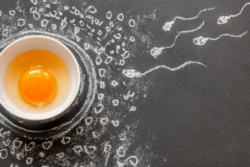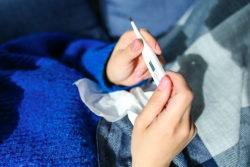The abundance of fertility tracking apps is pretty incredible these days. Imagine even just a decade ago, we didn’t have the same level of access to applications like this, meaning the average woman wasn’t able to get in touch with her cycle as easily as you can these days.
In fact, most women have completely ignored their menstrual cycles, or have tried to “turn them off” with an oral contraceptive pill or device for years and years before they are interested in trying to conceive. Once family planning begins, these applications come out in full force! Nearly every patient I speak to in my practice is using some sort of fertility tracking app.
Today I’d like to explain a few of the most commonly used applications with or without devices, and what they might be able to do for you.
Commonly Used Fertility Apps
- Ovusense: OvuSense is one of the more invasive devices. It is a vaginal sensor placed nightly in order to record core body temperature. Data is uploaded to the app to predict ovulation, and then also confirm its occurrence.
- Ovacue: This application uses a combination of oral and vaginal sensors to pick up electrolytes within your saliva and vaginal secretions to predict and confirm ovulation. The data is uploaded to the app so you can understand your fertile window.
- Daysy: This oral temperature device and application work together to record your basal body temperature upon waking. Data is uploaded to the app in order to predict your fertile window and confirm ovulation.
- Yono: This in-ear thermometer measures your core body temperature throughout the night. Data is uploaded to the app in order to develop a monthly basal body temperature chart that will show your monthly fertile window. It’s easier than oral temperature devices because it will record throughout the night meaning you can wake up at any time.
- Tempdrop: This device measures your underarm temperature throughout the night. The data is uploaded to an app that will then sync with other fertility tracking apps, like those listed below. As stated on their website: “Tempdrop works wonders for all women but especially for shift workers, breastfeeding moms, and those with irregular cycles due to PCOS and other causes.” There is no question that taking your temperature 1st thing every morning can be challenging, especially given the aforementioned factors. This device makes it very easy to record your temperature accurately, and give you a clear picture of your fertile window, while also confirming ovulation.
- Ava: This device is a bracelet worn overnight to track your skin temperature, resting pulse rate, heart rate variability, perfusion, and breathing rate. The data is uploaded to their app in order to show your 5 most fertile days of the month.
- Kegg: This is one of the only fertility tracking devices that measures cervical mucus. It will detect changes in electrolyte balance of the cervical mucus to predict ovulation. The device is inserted into the vagina once daily during the follicular phase to test cervical mucus. The data is uploaded to the app and reported on a graph. You can also enter LH test results, BBT, and sexual activity on the graph. Bonus – Kegg acts a kegel ball to improve pelvic floor muscle tone.
- Mira: This is one of the more advanced devices. It requires a urine sample in order to allow for proper analysis. You are provided with information on LH and estrogen levels in order to understand your fertile window.
- Oova**: This device allows you to track progesterone and LH levels with a urine sample performed each day. Data is then uploaded to the app where a fertile window will be established. **Not available in Canada.
Additional Fertility Tracking Apps:
- Clue & Flo (they are very similar):They require daily user interaction in order to track cycle data like symptoms, dates, cervical mucus, basal body temperature, sexual activity and more.
- Kindara: This is one of my favorite tracking apps. It allows you to enter basal body temperature, cervical mucus, cervical position, cycle dates, intercourse timing, and notes about your cycle throughout the month. It does require consistent input by the user in order to be most accurate. The monthly graphs show exactly what is going on with your menstrual cycle.
- Fertility Friend: Widely used in the TTC community, with an excellent free version and added features with a monthly subscription. What it lacks in basic design, it makes up for in usability – it allows you to overlay your past month’s charts, can show you similar charts of other users, and the app even offers an email/article based basal body temp “training” that answers a lot of questions around charting.
Now it’s your turn. Which device suits your lifestyle (and budget) best?
In closing, these applications can be excellent for teaching you about your body, however, nothing can compare to the information you will receive from a check up with a healthcare provider. In professional hands, like Conceive Health, the data can be analyzed and interpreted, and a custom care plan can be developed for lab testing, nutrition, supplementation and more to optimize your chances of conceiving and maintaining a healthy pregnancy.
Don’t forget to check in with one of our fertility-focused naturopathic doctors:
- 3-6 months prior to conception in order to optimize your preconception healthcare
- 6 months after tracking and trying to conceive in order to determine any issues with your fertility









